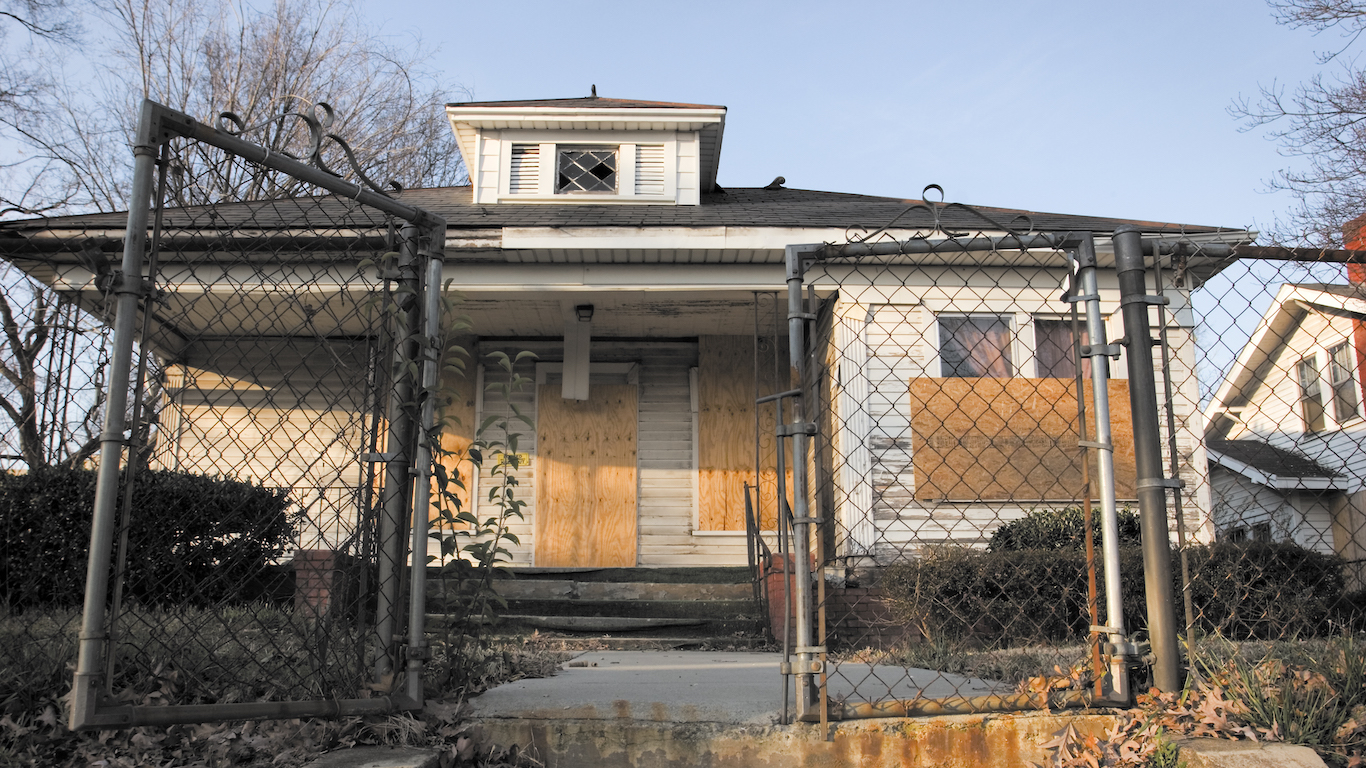Housing
There Are Over 17 Million Vacant Homes in America

Published:
Last Updated:

The U.S. Census Bureau has released its American Community Survey for 2018. Among the items the government agency measures are housing units. There are 138,539,906 in the United States. Of those, 17,019,726 homes are vacant. The number is staggering, and it approaches the number of people who live in the New York City metro area, which includes the nearby cities in New York, New Jersey and Connecticut.
A housing unit is a stand-alone home, separate apartment in a multi-dwelling building, a mobile home, a recreational vehicle (RV) or even a railroad car. The Census does not put a limit on how long a home must be vacant. If no one lives in it when a Census worker visits, it is considered vacant. Not all vacant homes are entirely abandoned. Some may be temporarily open because they are for sale. Others may be rental properties on the market for tenants. However, these “healthy” vacant homes are a small portion of the inventory.
Most of the conversations around the problem of vacant homes involve abandoned houses in America’s cities, particularly old urban areas that have lost population and have experienced increased poverty levels over the past several decades. Much of the analytic work on this subject focuses on cities such as Detroit and Baltimore, as well as smaller decimated cities like Youngstown, Ohio. 24/7 Wall St. has examined the vacancy problem in some of the largest cities in the United States. The one with the highest vacancy rate is Gary, Indiana, where the number is above 19%.
Vacancies are not exclusively in cities. In fact, vacancy rates in rural America and small towns tend to be higher than those in large cities. According to the Lincoln Institute’s study titled The Empty House Next Door:
Vacant and abandoned properties are not just an urban phenomenon. Many rural areas have levels of vacancy comparable to or higher than even the most distressed central cities. According to the Housing Assistance Council (2010), rural and small-town communities as a whole have a vacancy rate of nearly 18 percent, compared to just under 10 percent in metropolitan areas.
The one thing most experts agree on, regardless whether vacant homes are in cities, towns or rural areas, is that there is no system to move people into these homes. Some cities are facing a housing crisis in the near future. That means most vacant homes will stay vacant.
Start by taking a quick retirement quiz from SmartAsset that will match you with up to 3 financial advisors that serve your area and beyond in 5 minutes, or less.
Each advisor has been vetted by SmartAsset and is held to a fiduciary standard to act in your best interests.
Here’s how it works:
1. Answer SmartAsset advisor match quiz
2. Review your pre-screened matches at your leisure. Check out the advisors’ profiles.
3. Speak with advisors at no cost to you. Have an introductory call on the phone or introduction in person and choose whom to work with in the future
Thank you for reading! Have some feedback for us?
Contact the 24/7 Wall St. editorial team.